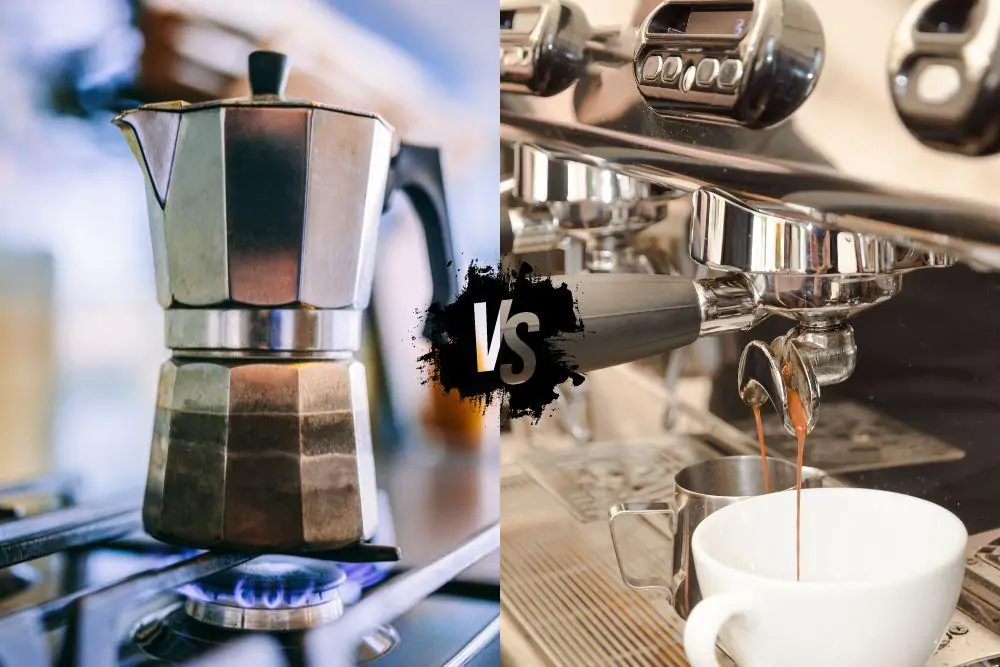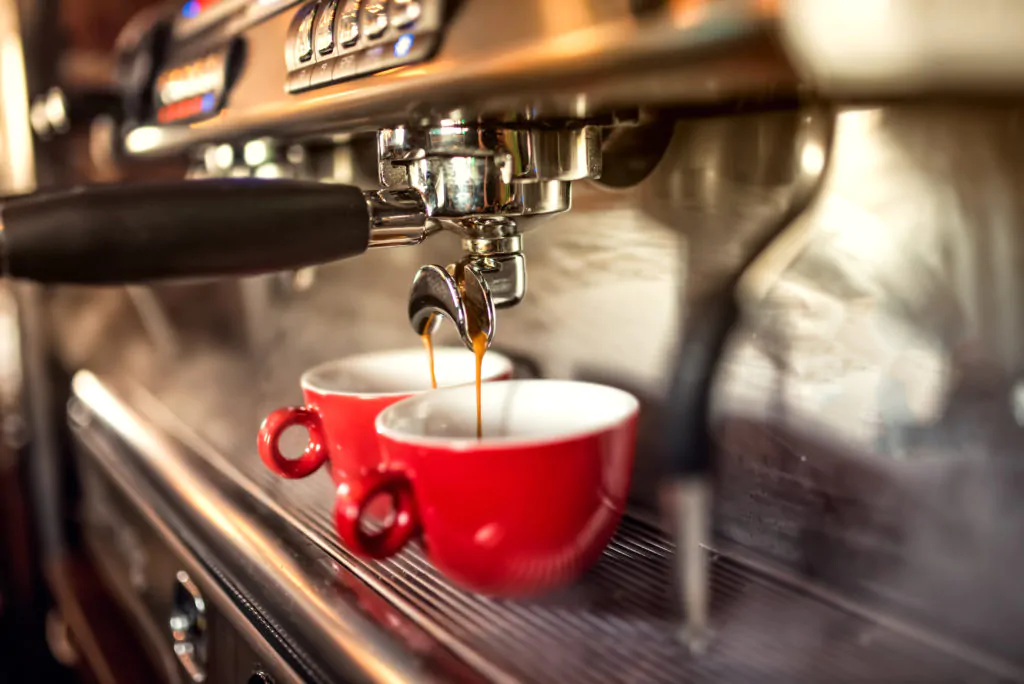
Stovetop espresso vs. machine espresso, which is better?
Americans drink around 146 billion cups of coffee a year. When you consume caffeine in that quantity, you want to enjoy it as much as possible, and how you prepare your cup at home influences that.
There are options galore, but we’re going to look at stovetop espresso vs. machine espresso. If you’re a coffee lover trying to decide between these two techniques or want to know more about coffee brewing methods, read on for the lowdown.
What Is A Stovetop Coffee Maker?
But first, some background info. Also known as a Moka pot, a stovetop coffee maker works like a percolating device.
Usually octagonal, it works by passing boiling water that’s pressurized by steam through ground beans. Invented in 1933 by Italian engineer Alfonso Bialetti, the method is firmly rooted in its culture.
An espresso coffee machine forces near-boiling, pressurized hot water through super-fine coffee grounds. The first mechanism was built and patented in the late 19th century by Angelo Moriondo of Turin in Italy.
Since then, the process has undergone improvements and refinements. Now for some stovetop espresso vs. machine comparisons.
Flavor
Let’s start with a surprising statement: a stovetop maker doesn’t brew authentic espresso. Why? Because it only uses 1-2 bars of pressure.
That’s more than what’s generated manually, but it’s way less than the 8-10 bars that a machine is capable of. The upshot? The end product tastes different than espresso, but it still has merits.
For example, coffee from the stovetop is more robust and more in-depth than its drip coffee counterpart. Full-bodied and rich in aroma. But – and this is a big but – it’s hard to control the quality.
It’s easy to over or under-extract. The former leaves you with bitter coffee, the latter with a watery drink. It’s also tricky to create long-lasting crema, the tan-colored and aromatic foam that sits atop the shot of espresso and indicates a well-made cup.
On the other hand, an espresso machine generates consistent cups. The group head valve allows for even extraction and an intense, concentrated coffee flavor.
There’s also complexity in taste, and the coveted crema, too. As a result, espresso made from a machine is a bit more versatile.
Remember, espresso forms the basis of many popular coffee drinks, including macchiatos, americanos, cappuccinos, and lattes. And there’s the alcoholic variety as well.
Fancy an espresso martini? As a quick aside, remember, regardless of the brewing process, the bean and roast matter too.
If poor-quality, you won’t achieve great coffee with a tip-top flavor. Also, if you don’t buy pre-ground, be sure to invest in a decent grinder.
Ease Of Use

Let’s face it, mastering the art of an espresso machine isn’t easy. That’s why people train as baristas.
It’s a complicated bit of kit with heating elements and motors that requires patience and practice to crack. And there’s a science to the brewing process.
Including warming up the apparatus, using the portafilter, learning to tamp and make a ‘puck,’ and pulling the shot. But once you know what you’re doing, it’s easy to maintain the skills.
A stovetop maker is a straightforward piece of equipment with three chambers and simple mechanics. But using one is less of exact science and will probably require trial and error.
Things to keep in mind are:
- Water temperature
- Type and amount of coffee
- Grind
- Flame intensity
What are some common mistakes? You can brew for too long, steam can leak from the side of the release valve, or the heat may be too high.
If you find the coffee is too bitter, try a slightly coarser grind next time. If it tastes burnt, take the pot off the heat a bit sooner.
How about clean-up time? The golden rule with a stovetop espresso maker is to let it cool down before discarding the coffee grounds and rinsing.
Top tip: it may be tempting to bang the filter to remove the grounds, but doing that will dent the pot, and you’ll need to replace it eventually. A machine requires a bit more effort.
After each use, you’ll need to run water through it and steam shot through the steam wand (if you have one). And you’ll need to clean the filter basket and the portafilter as well.
Think about capacity, too. A stovetop maker ranges from a single cup of coffee to 12. In contrast, a machine yields 1-2 measures. But, it is quick to use.
Durability
Before we talk longevity, a quick note on cost. You can bag a Bialetti Moka pot for around $40. Pretty cheap, right?
A machine will set up back at least $300, and you can spend more than $1000. If something goes wrong, you can probably guess which option will cause you more pain – and dollars. Yep, the machine.
With many parts, some of which are delicate, there’s more that can break. You could end up forking out hundreds to remedy the problem, and you may need to hire a specialist.
Worse case, if something goes that badly awry with your stovetop maker, you can buy a new one.
The Final Word on Stovetop Espresso vs. Machine Espresso
People are obsessed with coffee. For many, a cup of joe kickstarts the day. 52% of java drinkers would instead go without a shower in the morning than give up the potent elixir.
Arabica, Robusta, washed, or natural: whatever your coffee bean and roast of choice is, there’s a decision to make. How to brew?
Both stovetop and machine espresso have their pros and cons; there isn’t a definitive winner. It depends on your budget, skill set, and your preferred flavor. So don’t be afraid to experiment.
Stovetop Espresso: Pros and Cons
Pros
- Produces full-bodied, robust coffee
- Easy to clean
- Cheap and long-lasting
Cons
- Not true espresso
- Can make inconsistent brews
- Hard to produce crema
